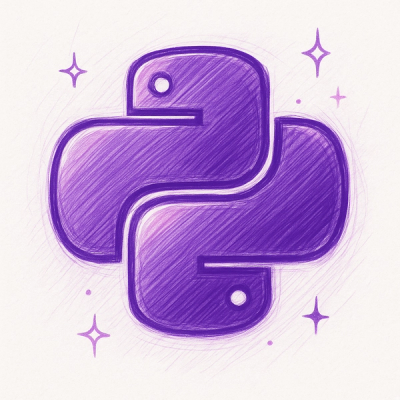CDS Language Server
The CDS language server implements the Language Server Protocol (LSP)
for SAP's Core Data Services (CDS).
It can be used in many popular IDEs like, for example, Visual Studio Code,
IntelliJ,
or Eclipse.
It provides many useful features for working with and enjoying CDS sources.
Features
-
Syntax highlighting via Textmate grammar
-
Additional semantic highlighting
-
Source code validation providing diagnostics (error messages, warnings, ...)
-
Where-used navigation to
- definition
- references
- highlight occurrences
-
Code completion for
- keywords
- identifiers incl. not yet imported identifiers with corresponding
using statement
- using paths and artifacts incl. showing README.md documentation as details
- i18n translation IDs
- turn on/off formatting regions
-
Snippets for typical CDS language construct
(with documentation extracts of capire explaining language concepts)
like
- namespace and context
- using
- service
- type
- entity and projections, ...
- element, associations, and compositions
- extend and annotate
- annotations for documentation
- annotate all elements of an entity
-
Quick fixes to
- create using statement for unknown artifacts
- maintain missing translation
- convert
@description annotations to doc comments
-
Inventory (symbols) for
- current file (Outline)
- workspace incl. query capabilities to select, for example, artifact types, names, also include reuse models
-
Hover information based on
- doc comments
@title and @description annotations- translations
README.md and package.json#description
-
Code formatting
- whole document
- selected range
- on-the-fly when completing statements using
; or }
- on save (depending on the IDE)
- on paste (depending on the IDE)
- with many options, configurable using
- settings file
- command line switches
- Config UI with simulation of options for Visual Studio Code and Eclipse
- JSON schema for textual support
- also for markdown in doc comments
-
Code formatting via CLI (incl. verification mode)
-
Translation support
- properties, JSON, and CSV files
- navigate to translation definitions from translation IDs like
'{i18n>customerName}'
- show translations on hover
- quickfix to maintain missing translations
-
Annotation support via external plugin
- diagnostics
- where-used navigation
- hover information
- code completion
- quick fixes for translations
Usage
The CDS language server can only be used as part of an IDE extension or plugin. See Installation for more details.
A code formatter for CDS source files is included.
Installation
`@sap/cds-lsp` is a language server. As such it needs a client to operate. This is typically an IDE.
Today, most of the popular IDEs come with support for language servers. Basically there are two kinds of integration, specific and generic.
Specific IDE support
Often, a plug-in or extension component for a specific language wraps the corresponding language server. For @sap/cds-lsp there are specific extensions for
Generic IDE support
For other IDEs there exist generic client plug-ins for language servers. Examples:
- VIM has several options, e.g. ALE
- Emacs, ...
Requirements
@sap/cds-lsp is a NodeJS module. As such it requires NodeJS installed on the client machine. Minimum version is 22.15.1
Start-up
Installation via npm
- Create an empty folder and
cd into it
- Execute
npm i @sap/cds-lsp to download the language server and all its dependencies
This will create a sub-folder node_modules with all required npm modules.
It will also create a platform specific shell script to start the language server.
It is located in the node_modules/.bin sub-folder and is called cds-lsp.
For a stdio connection use node_modules/.bin/cds-lsp --stdio.
For other connection channels see below
Custom Installation
TL;DR
-
install @sap/cds-lsp from npmjs.org into subfolder cds-lsp
#!/bin/bash
componentName=cds-lsp
fullName="@sap/$componentName"
echo '=== Getting latest download URL'
url=$(npm view $fullName | sed -n 's/.tarball.*\(https.*\)$/\1/p')
echo "=== Downloading $url"
curl -O $url
filename=$(echo $url | sed -n 's/.*\/\(.*\)$/\1/p')
echo "=== Extracting $filename"
tar xfv $filename
mv package $componentName
echo "=== Removing $filename"
rm $filename
cd $componentName
echo "=== Installing dependencies"
npm i
-
start the server using stdio
#!/bin/bash
main=$(cat cds-lsp/package.json | sed -n 's/.*"main".*"\(.*\)".*/\1/p')
node "cds-lsp/$main" --stdio
Details
-
Get the download URL for the tarball with npm view @sap/cds-lsp. E.g.
/home/user$ npm view @sap/cds-lsp
@sap/cds-lsp@6.2.2 | SEE LICENSE IN LICENSE | deps: 9 | versions: 33
Language server for CDS
https://cap.cloud.sap/
keywords: CAP, CDS, LSP, SAP, language, editor
bin: cds-lsp, format-cds
dist
.tarball: https://registry.npmjs.org/@sap/cds-lsp/-/cds-lsp-6.2.2.tgz
...
-
Download the tarball e.g. curl -O https://registry.npmjs.org/@sap/cds-lsp/-/cds-lsp-6.2.2.tgz
-
Extract the TGZ file e.g. tar -xf cds-lsp-6.2.2.tgz
-
Enter package folder: cd package
-
Execute npm i to install the dependencies.
-
Check the main entry in package.json. This is the start script e.g.
/home/user/package$ grep "main" package.json
"main": "dist/main.js",
-
The simplest form to start the language server using stdio (see Connection channels below) e.g.
/home/user/package$ node dist/main.js --stdio
-
The server is started and waits for a client to connect
Connection channels
@sap/cds-lsp can communicate to a client via one of three different connection channels (see the documentation of the client plug-in for details which channels are supported)
stdio: the language server listens on stdin for requests and sends responses to stdoutnode-ipc (if the client runs with NodeJS): add --node-ipc as a command-line argumentsockets: add --socket=<port> as a command-line argument
For details see the similar json-language-server integration docs.
Syntax Highlighting
For performance reasons, syntax highlighting is not done via the language server protocol.
A TextMate grammar aside of the language server provides this.
@sap/cds-lsp comes with a TextMate grammar file included for the CDS language.
Additionally @sap/cds-lsp supports semantic highlighting. This is a feature of the language server protocol and is supported by some IDEs.
While specific client extensions usually integrate this by default, a generic integration requires to configure this separately.
Some IDEs have TextMate support built-in. Others require another plug-in, a TextMate client.
Refer to the corresponding documentation how to configure a custom TextMate grammar file. CDS source files have the .cds file extension.
License
This package is provided under the terms of the SAP Developer License Agreement.



